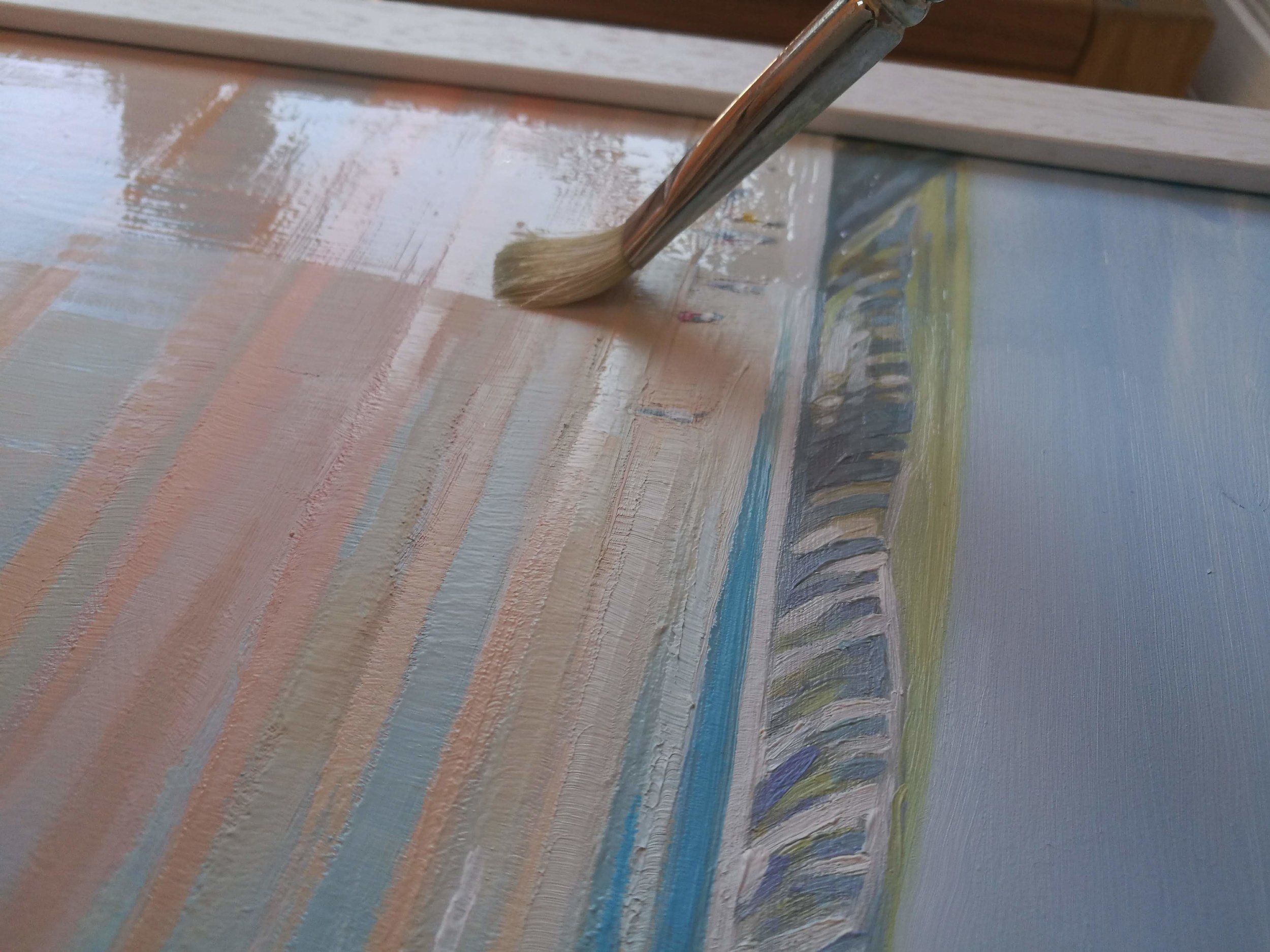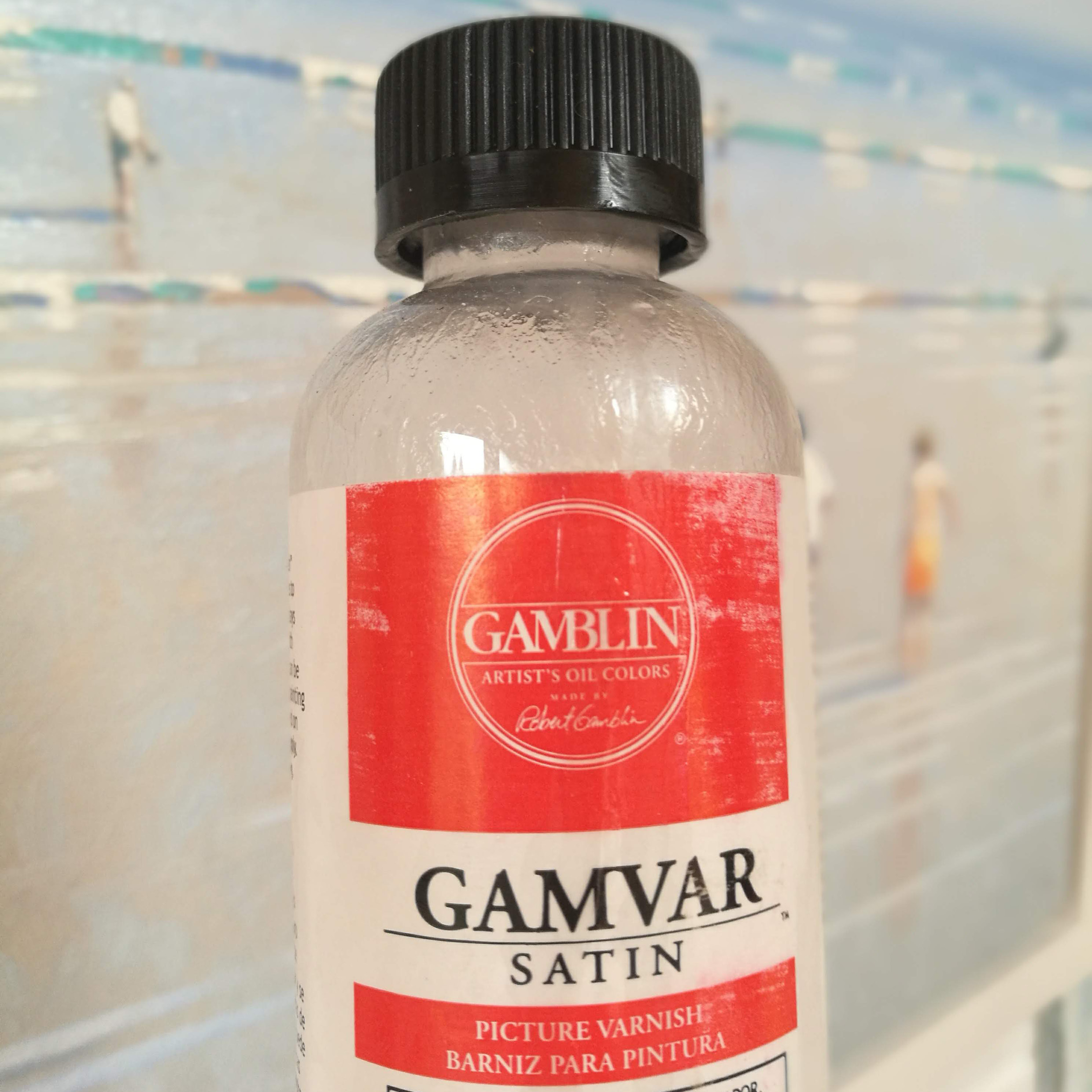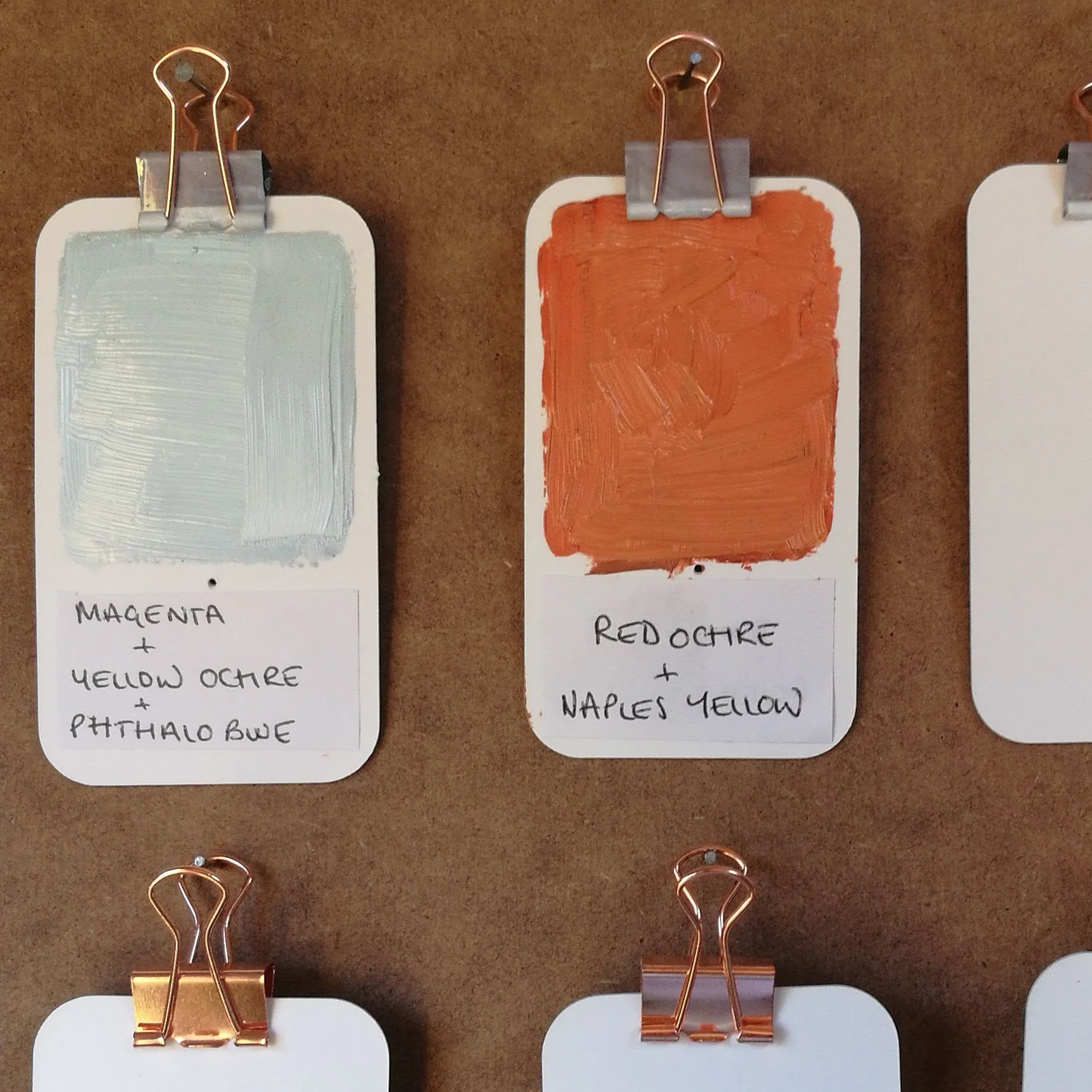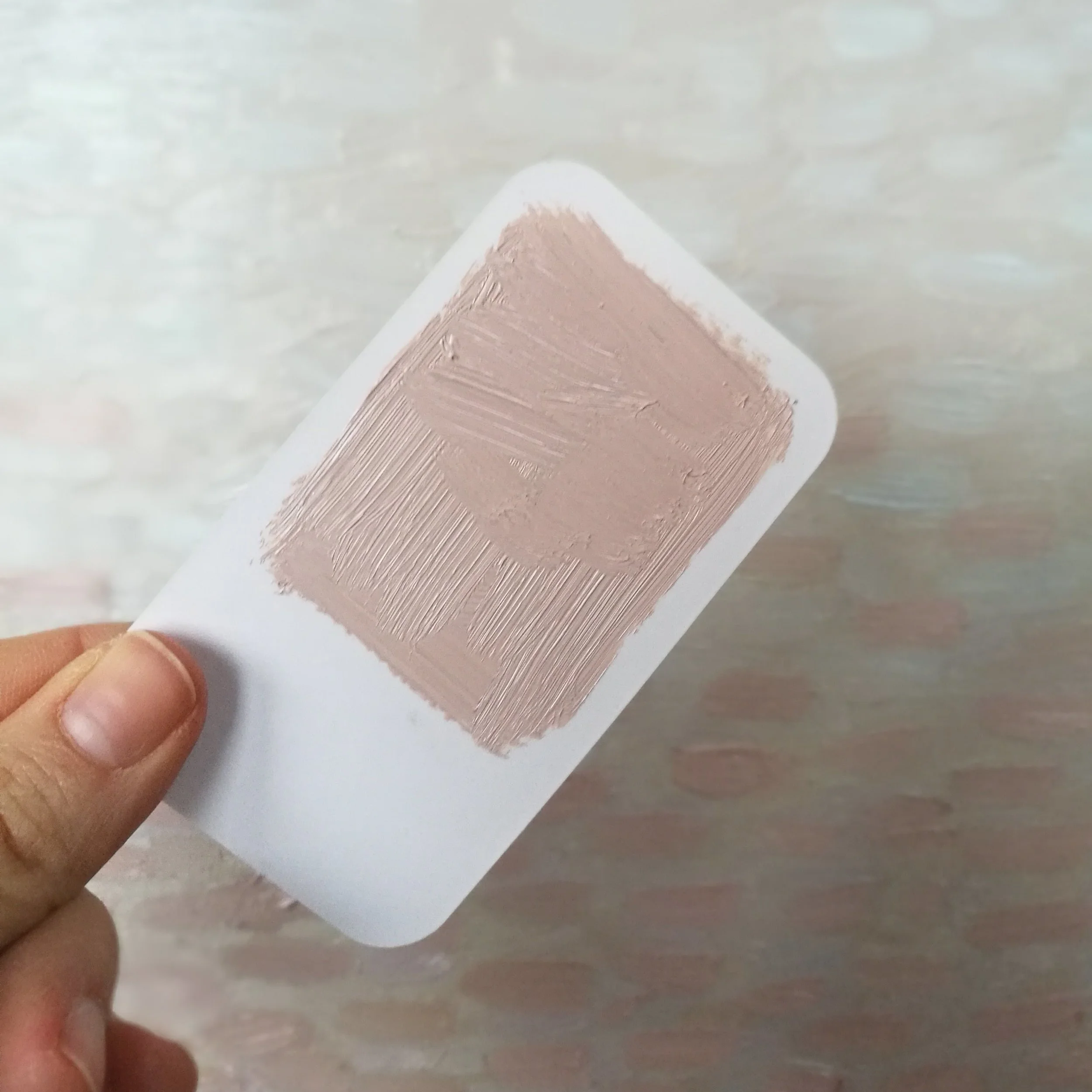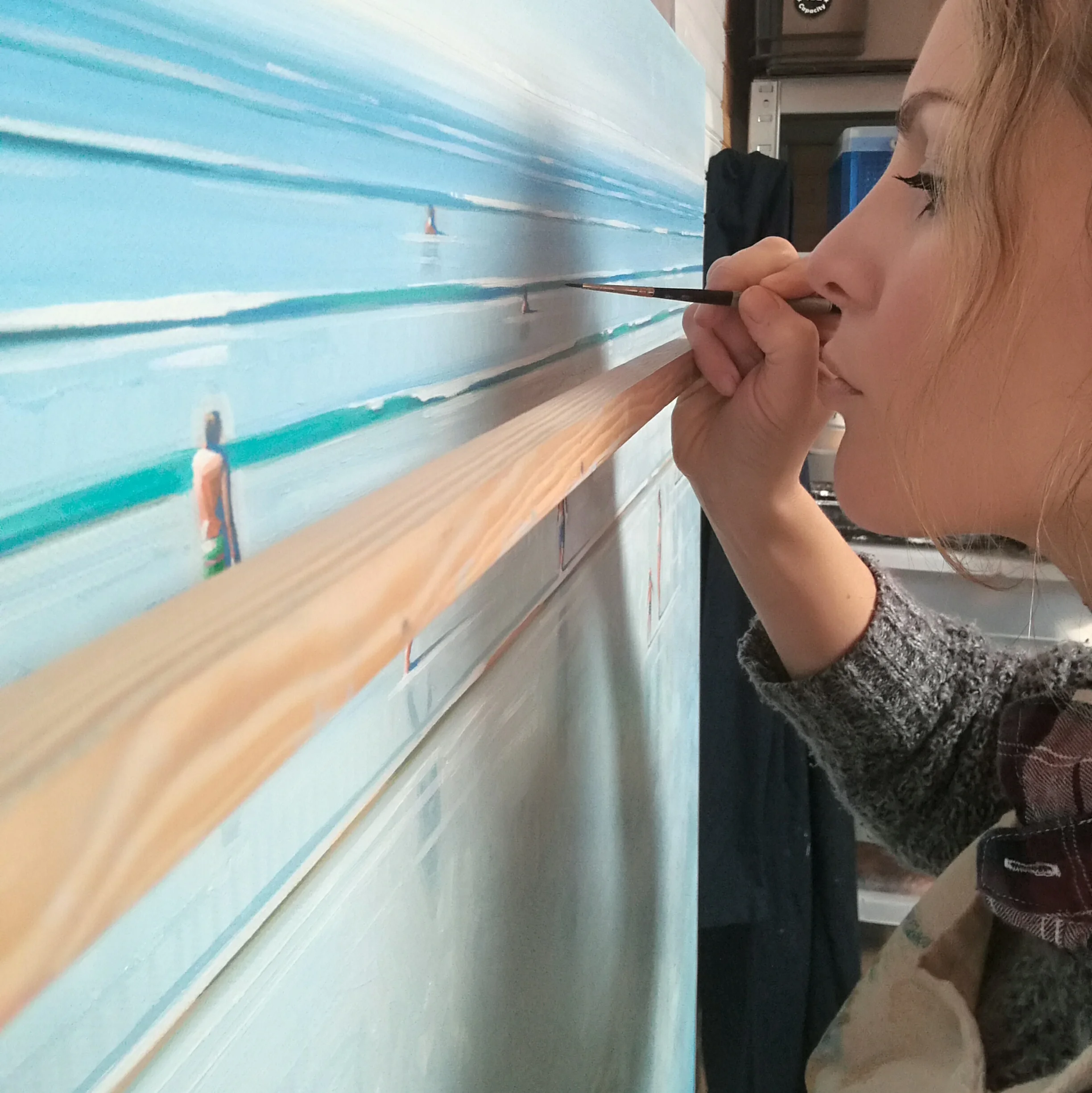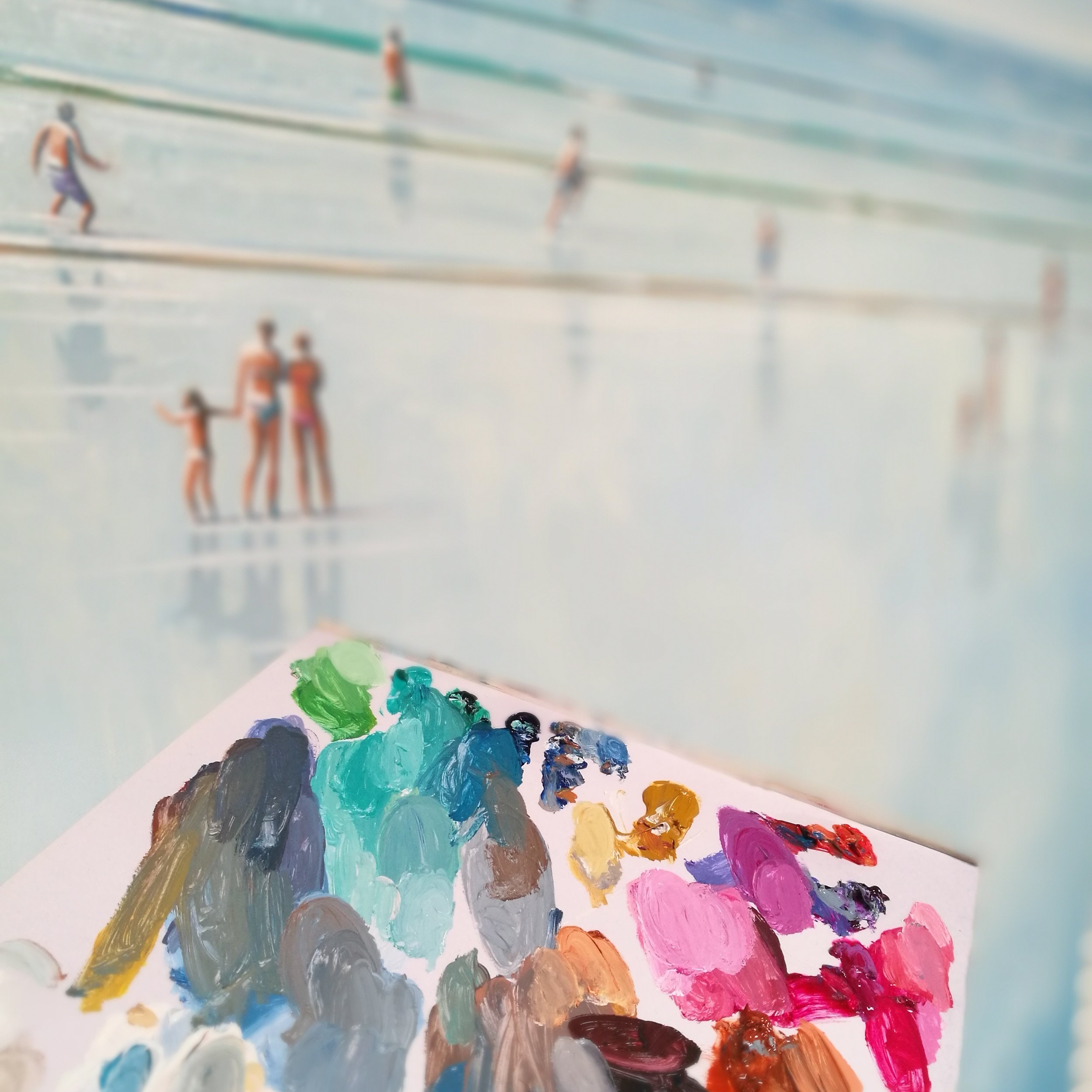To varnish or not to varnish: That is the question
Why would I use it?
Spending a long time on any piece of art can make you protective of your creation, especially when handing it over to a Gallery, client or just to hang on your own wall space. You want it to be the very best it can be for a long time, right?
...I know I do.
Well then... you need to varnish your work. In my case especially on oil paintings.
Unless you can hire your own bodyguard to stand in front of your work battering off wayward dirt and dust, you would probably like to add a protective layer.
Benefits of using a varnish
Plus the benefits of varnish is that it will tie together the overall appearance. When using different mediums like linseed oil etc, you will have noticed that once dry your work can often appear patchy. Some areas will be matt whilst others more glossy.
The wonder of the right varnish is that you can have the overall consistent finish that you desire.. be it Matt, Satin or Gloss. Take a walk around any Gallery and you will see a wide range of different finishes.
Also you may have noticed that once your painting had dried, the painting can appear dull. Varnish can also bring back the vibrancy to your colours.
What product should I use
The key is to figure out what finish you want for your painting and go from there.
Every artist has there own products that they are happy with. For me, I love Gamblin's, Gamvar varnish. Have been using for a few years now. I used to have a few problems with the varnish beading on top of the painting, especially if I had used a lot of linseed oil (google if you don't know what this is). But their recent satin varnish does not do this, on my artwork anyway.
When to apply
With Gamvar, the benefits of this product is that you can use it once your whole painting is touch dry because it is water-based. Other products state that you have to wait 6 months to a year!
...Who has that sort of time?
How to apply:
Prepare your space to be as dust free as possible plus a space where it can be left undisturbed. Also have a small pot for the varnish and a piece of kitchen roll handy for wiping any stray lint, which I warn you will want to adhere itself whilst applying. Lots of fun.
I use a small rough brush which I lightly add small amounts of varnish with and work gently into the painting. Should be touch dry in 24 hours depending on room temperature.
Removal:
If for some reason you need to take off the varnish you can removed with Gamsol. Haven't yet come across a reason to have to do this, will admit that the thought terrifies me. But the Gamblin websites states it can be done safely.
How many coats:
This is completely up to you based on how you want the final finish to be. I change my mind on every piece. Sometimes one or sometimes two. (the above painting had two)
I don't like it to be too reflective as this can hinder where you hang it.
Warning!!!:
Any new products should always be tested first before applying to your beloved master piece. This is where those unused artworks you have hidden away come in handy.
Remember, this is just my own opinion. Please feel free to contact me to tell me your thoughts on the subject or if you need help directing in the right direction.
Thanks for reading
Harriet :)
Chase the dream not the competition
Spend all your day looking at Instagram or Pinterest or other similar sites?
...I know I do.
Spend a lot of time 'researching' ideas and styles?
Of course they can be brilliant tools following other artists and their art, it can be inspirational. But be careful.
At the end of your finger tips we have constant access to hundreds of thousands of images and their implied success stories (emphasis on 'implied') which can overload your mind and hinder your own personal growth.
This recently happened to me.
After chatting with other wonderful people in similar careers, who I admire greatly. I discovered a recurring problem. Everyone is so obsessed by what everyone else is doing. So much so that they are devaluing their own individual, unique creativity and wasting valuable time.
So what should you be doing? Simply put, remind yourself why 'you' do what you do and where 'you' want to go. Using social media should be kept to a minimum. Its easy to get distracted.
So step away and get your head down and just let your creative juices flow.
Me and my journey
So I wanted to show you my journey with portraiture so far. I am not sure of the end goal but its the new techniques and new compositions and colours that drive me ever forward. Looking back at my 'own' portfolio (and not others) I can see clearly how far I've come and what I should also revisit.
I find this a much more positive and constructive use of my time.
Remember, this is just my own opinion. Please feel free to contact me to tell me your thoughts on the subject or if you need help directing in the right direction.
Thanks for reading :)
Art Secrets
Remembering colours
After years of painting a wide range of subjects and mixing a whole array of colours, I often come across a recurring issue... How to remember what colours I use and mix when a new commission lands on my lap. Especially those that have been requested to be painted in the same style as previous works.
keep it visual
For me, this new process of mine is already saving me time in my studio. I need to have my colour mixes up and somewhere in my line of sight when painting. So whilst I'm in the mid of creating, I can easily be reminded of the colours and the mixtures that I love.
I do love recycling, so I turned old business cards into colour samples. Noting also what colours I used to make them. Slightly annoyed I hadn't started this years ago.
Studio
Continuing this theme of keeping colour swatches visual, I always have one area in my studio where I keep other visual inspiration. Cut outs from magazines, colour swatches from B and Q. Even my own artworks and ideas that I want to revisit. Keep it visual people.
Remember, every artist has there own way of doing things and when I need help I am constantly on artists chat rooms trying to find new ways to solve my latest problem. Please feel free to contact me if you would like any more advice or if you need help directing in the right direction.
In my Studio - Essentials for oil painting
What you need
I often meet people who say they are scared of trying oils. I can tell you from my experience that you have no reason to be. Here's a basic guide to what I use daily and why.
Space
Sounds obvious but you need somewhere you can paint and leave your piece to dry for a few weeks on an easel or fixed to a wall (I normally do both). Oils can take up to 5 days to be touch dry once you're painting is finished. So grab a well-lit space and make it yours (not in direct sunlight though).
Oil paints
I started by buying an affordable starter pack with 6 colours from Georgian Oils by Daler Rowney. Don't get anything cheaper as the consistency won't be anything like traditional oils but more like poster paints. Make sure your pack also includes a white. These days I have a range of more expensive oils but mainly I use oils by Winsor and Newton because they are great and easy to work with.
Palette
I use a tear-off palette by Winsor and Newton (seen above) and store it in an slightly bigger air-tight tub to make it stay wet longer. Some artists use glass but I find cleaning and scraping the paint off time-consuming.
Mahl Stick
This is basically a resting stick. Especially great if you have shaky hands like mine. You can see my very expensive one in the photo above that I got from the timber merchants up the road... lol. Helps me with all those straight lines and to lessen the amount of paint that I would get on my hands. Good for pastel work too.
Brushes
This is completely up to you and down to your own individual style. I use a range of soft flat-head Winsor & Newton brushes on canvas boards and wooden pannels myself plus a few tiny tiny ones for detail. On canvas I will use more coarse brushes. But I will have to cover this in more detail another day.
Oil mediums
These are what you add to your paint to make it thiner, thicker, smoother or to simply extend it. There are tons of them. Think of it like adding water to watercolour to be able to work the paint. I personally use linseed oil and stand oil to thin and thicken the paint. Also great for blending. Again I will go into these in more detail another time.
Solvents
These are for cleaning your brushes or to thin a 'wash' of paint. They are toxic so always use in a well ventilated room. I use Sansodor which I think is less toxic than turps for thinning coats and occasionally cleaning brushes. Always remember if its 'odorless, it doesn't mean the dangerous fumes are gone. You just can't smell them.
Cleaning
Due to the toxic issue of using solvents I mostly use 'Murphy's oil soap' (pictured above) for cleaning my brushes in-between colours. 98% natural and smells nice. Makes them soft too.
Remember, every artist has there own way of doing things and when I need help I am constantly on artists chat rooms trying to find new ways to solve my latest problem. Please feel free to contact me if you would like any more advice or if you need help directing in the right direction.
What type of art sells the best?
I'm unsure if this is the same for everyone but I really struggled in the beginning to decide what I should paint.
I call myself a "flibbertigibbet with a brush" for that very reason. Early on I painted everything from apples, bunnies lost in woods, abstract trees, cartoons and children's books. Had no idea and no consistency at all.
Later I started painting still life, and loved it! But I had such strong reactions from people I stopped. These are now what I call the 'Marmite' of art. You either love it or hate it.
One piece of information that did direct me was this article that I found many moons ago which helped to explain why some things sold better than others. This led me to try landscapes. Or at least to try and paint things that are in the top 5.
According to a Art Business Today survey in 2003 - These were the top 10 best-selling subjects for painting in the UK.
- Traditional Landscapes
- Local views
- Modern or semi-abstract landscapes
- Abstracts
- Dogs
- Figure studies (excluding nudes)
- Seascapes, harbour and beach scenes
- Wildlife
- Impressionistic landscapes
- Nudes
I was shocked by these findings. I thought nudes would be right up there.
The next problem is to then decide if this should then direct you just because you want to improve your chances of selling. Or to let your own desire for personal artistic development guide you. Choices, choices.
How to become an Artist
The eternal search for the answer to that elusive question.... 'How do I become an artist?'
I have discovered through many years of typing that very question to the internet Gods that there is no one answer. Many hearts will slump at this response. But you should look at this in a more positive way. There are many ways.
Welcome to my first blog post from my new website. My name is Harriet Hue and I have been a professional artist for a few years now. I am vague here as to the number of years as the description of what an artist is, is also vague.
Was it from my first sale? That moment I received my Fine Art degree? When I sent that fateful letter to the government drones to say I was registering myself as self employed? Probably.
I think it's more than that. Hate to get spiritual about it but for me it was a mixture of all those things. Its the journey. But more importantly it was that moment when someone asks you what you do? Saying I was an artist felt like a lie. I never believed it so why should anyone else. Why should anyone buy any of your work if you don't think its worth it.
So for me the day I became an artist, was the day I believed I was one.
Oh and selling lots of artwork... that helped too. Lol.
In my blog's I will show you how I do what I do. Helpful tips, websites, links that I have found on my journey so far.
Any questions please don't hesitate to ask.


